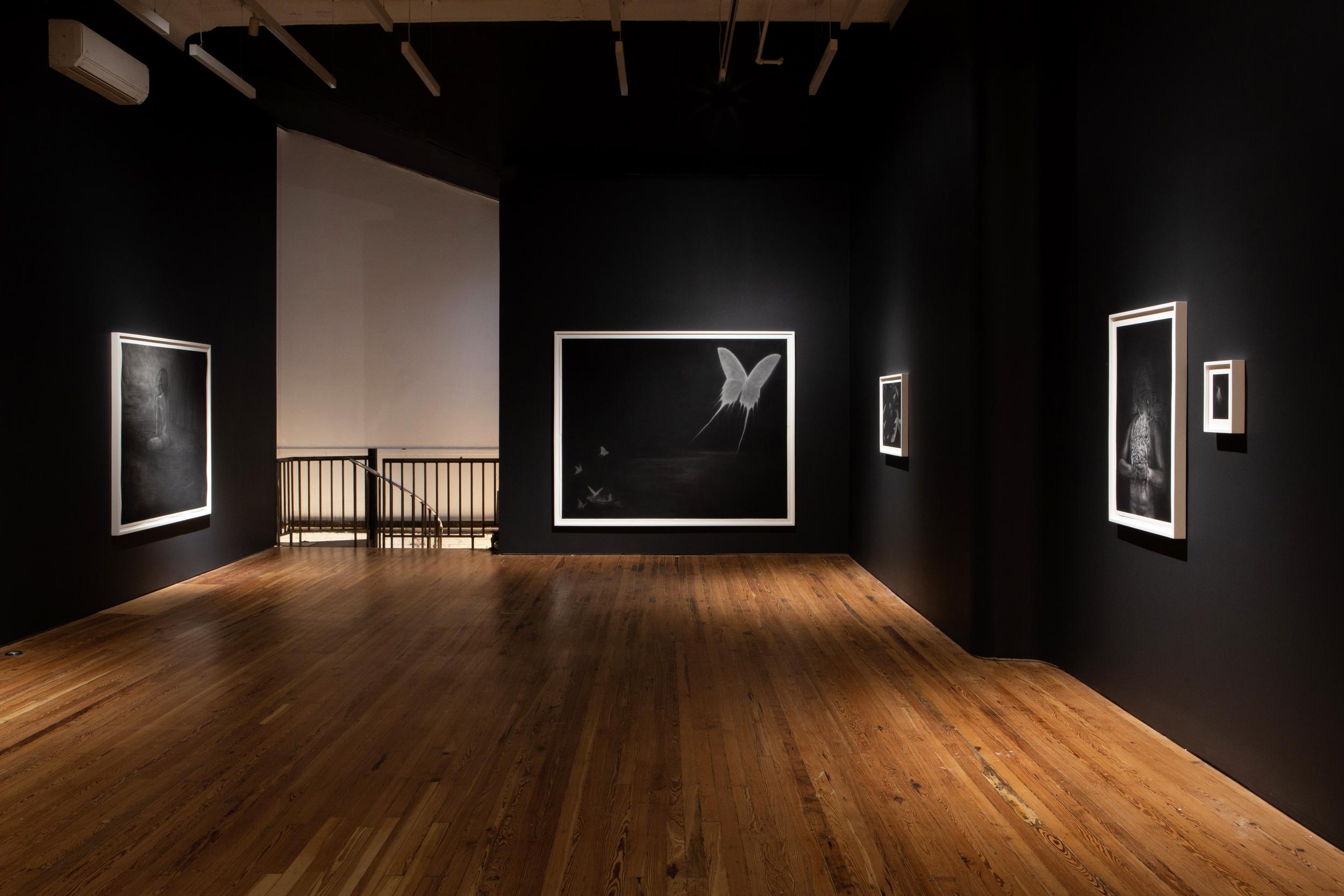The “Personal Hauntings” of Arel Lisette and Alina Perez
Felicia Manning sits down with New Haven-based artists Arel Lisette and Alina Perez following their recent two-person exhibition Not Dark Yet at Deli Gallery, New York. The show featured exclusively black & white drawings on paper, produced during a period of close collaboration between the two artists. In this interview, Manning, Perez, and Lisette discuss the slipperiness of memory, challenges of charcoal, and the generative potential of creative reciprocity.
I recently saw your work in the two-person exhibition Not Dark Yet at Deli Gallery. The show consisted of large-scale charcoal drawings that amazed me. How did the concept for the exhibition first develop?
Arel Lissette: Alina and I have wanted our drawings to be in conversation within an exhibition for a long time. The concept for this show came from our shared desire to use drawing as a way to revisit darker aspects of our past and understand their influence on the present, and even the future. We have talked at length about how few artists use drawing as their primary medium, and how black-and-white work is often overlooked in favor of color. Alina was particularly excited to dedicate an entire show to charcoal drawings, since she is more known for her color works.
Alina Perez: Arel and I have known each other for over five years, and have watched each other’s practices grow since then. From early on, I knew that I could trust her in my studio, and that her perspectives would help me to understand how my drawings operate beyond myself. We quickly noticed a lot of conceptual overlap in our work and having an exhibition together was a way to scrutinize those shared interests. In this way, having a show together came very naturally.
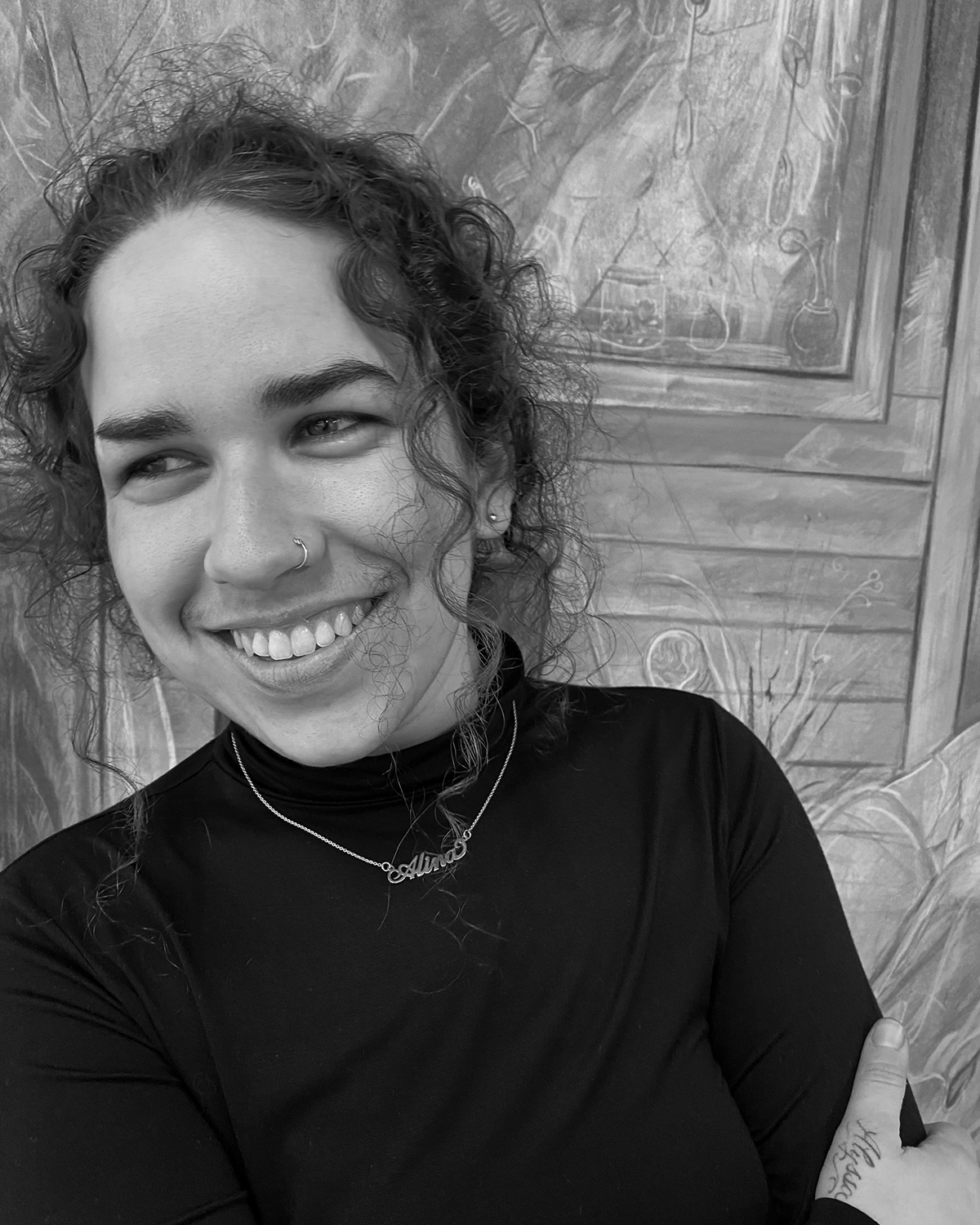
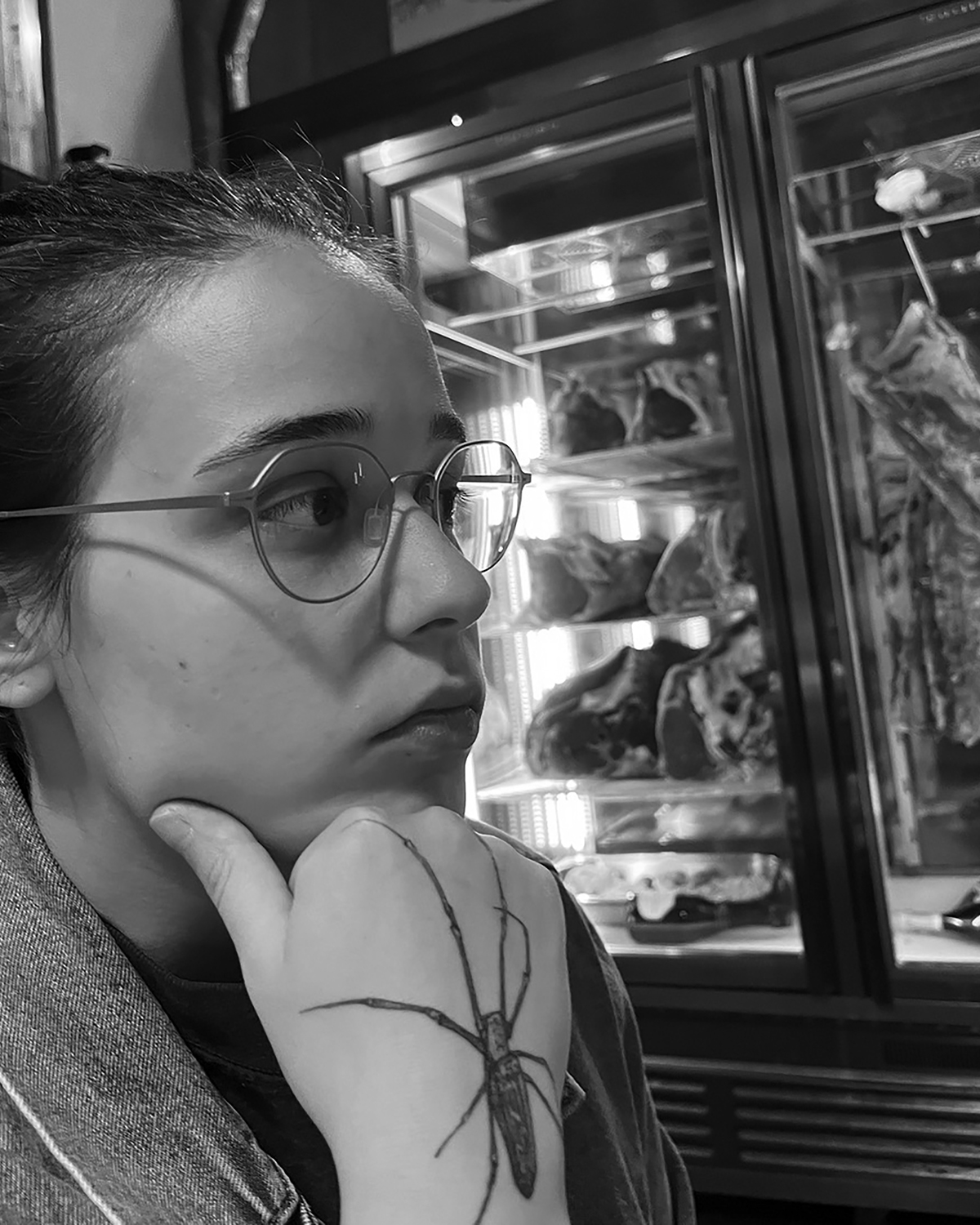
FM: Can you describe your collaborative process?
AL: I would say Alina and I have a unique relationship in the studio. Alina frequently asks for my feedback and to be her “second set of eyes.” In turn, looking critically at her drawings and asking questions has undoubtedly made me a better artist. This rapport is really what paved the way for us to undertake the shared effort of a two-person exhibition. We were heavily involved in each other’s processes while creating Not Dark Yet and spent a significant amount of time discussing the intended function of showing our drawings together, even going so far as to collaborate on content and composition.
AP: The collaborative process was also one of intense intentionality. I knew that Arel’s work brought something out in mine that was sometimes uncomfortable, and I really wanted to lean into this and allow her direction to take us both someplace new.
I think when you see a two-person show, it’s usually two artists working separately. We wanted to make sure that this exhibition was more than that, to actually create an experience that enveloped you upon entering the gallery. For this reason, I was extremely open to Arel’s vision for the exhibition and her perspective on my drawings because I understood that it would serve the entirety of the show.
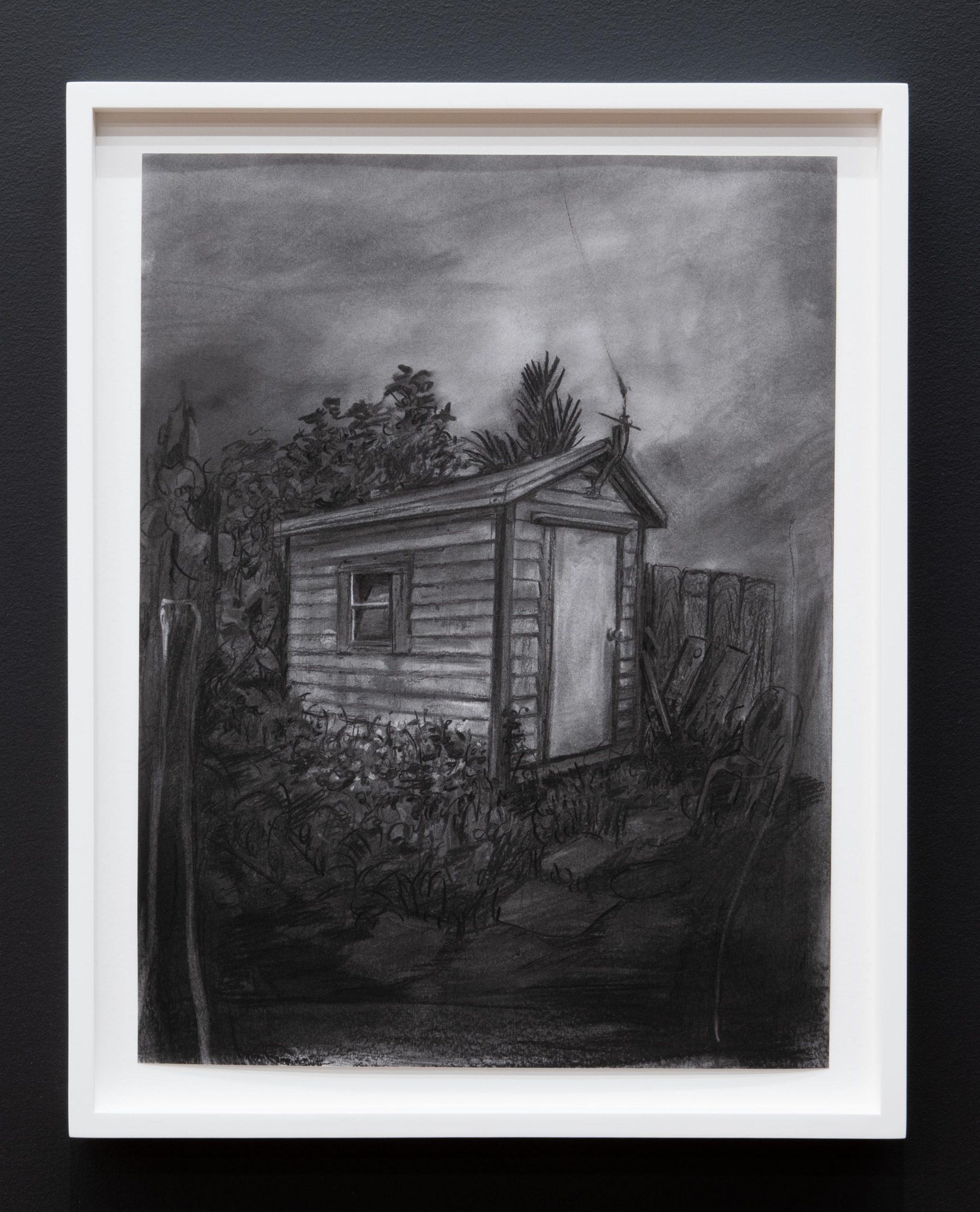
FM: When did you both first start working with charcoal and what led you to this specific medium? Can you describe some of its technical challenges?
AL: I started working exclusively with charcoal and pastel several years ago. Prior to that I was making graphite drawings and mezzotint prints, but wasn’t fully satisfied with the metallic sheen of graphite and the intermediary nature of printmaking … It was actually Alina who encouraged me to start working with charcoal again! I love the immediacy and sensitivity of charcoal. It has intensely rich tones and lends itself beautifully to drawing through erasure, but there is an “aliveness” to it. Alina and I often talk about how the finished drawings are ultimately just a collection of dust particles carefully arranged on paper and always at risk of being obliterated. This fragility appeals to me. Most of the technical challenges I experience come from drawing on paper, but the beauty of paper is that it is alive in its own way, too.
AP: Charcoal has always remained one of my primary materials. Malleable, messy, chunky, soft, scratchy, and smooth—charcoal can do anything, and drawing in general doesn’t require many supplies. I also love paper—it can frustrate me, but I truly believe the challenges that arise while working with this media add to the magic and sense of presence that a drawing can hold.
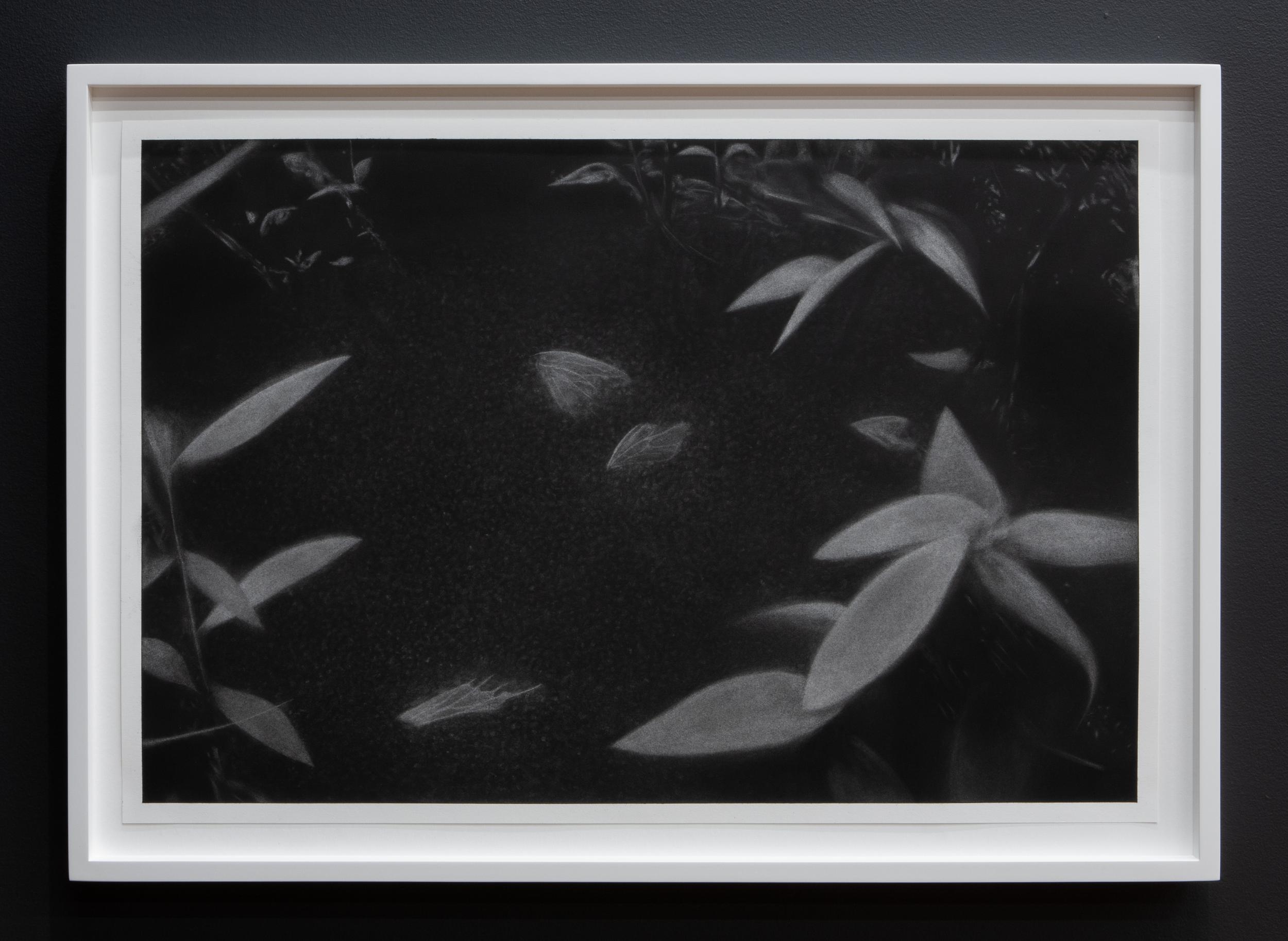
FM: The drawings are all quite intricate, but your methods for achieving this intricacy vary. Can you describe your individual processes in more detail?
AL: I’ve always had a subtractive approach to drawing, meaning I start with a ground of material and then erase from this field to create new forms. I begin each drawing by covering the paper in charcoal until it is entirely blacked out, making sure the pores are saturated, and then work into this field of black by repeatedly erasing, applying more charcoal, and erasing again to create the final piece. There is no white material added to my drawings—all of the light and shadow is produced from the white of the paper underneath.
AP: My process on the other hand is additive and often automatic. I very much enjoy putting up a piece of paper and just letting my hand make marks. Sometimes this “randomness” can turn into images, and I like to think this allows me to give up a sense of control and let the drawings speak for themselves … Arel has reminded me that it is important to take a step back and consider what kind of feeling I am trying to evoke throughout this process.
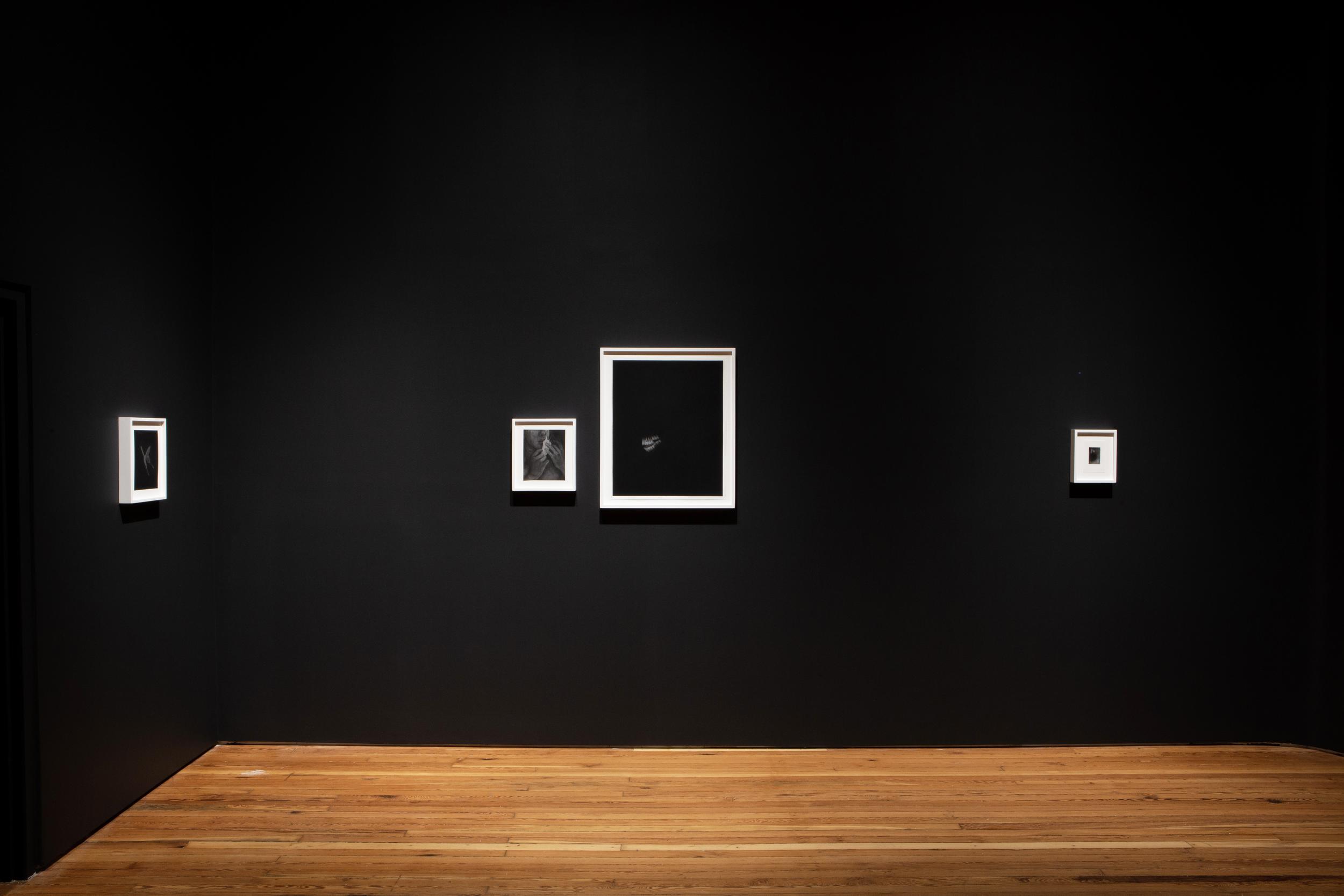
FM: The subject matter in each of your drawings at first appears benign, yet they feel sensual, moody, and at times even dangerous. How do you determine the content of your compositions?
AL: Many aspects of my drawings are determined before I begin working on a final piece. I typically have an image in my mind of what the composition will be and how I want it to function, but things inevitably change during the push and pull of drawing. I try to stay open-minded and to look for moments when a work-in-progress is indicating it wants to move in a different direction than what I had originally planned.
AP: Working on Not Dark Yet with Arel pushed me into addressing certain darker themes that I had previously sidelined. On a spontaneous trip back home, I was confronted by the shed in my backyard in a way I had never experienced before. This in turn led to the creation of my drawing Oh, que Angustia la Mia, which functioned as an eerie holding place for our inner grievances, shames, violations, and fears. The headspace I was in that was required to create this show is what allowed me to see this shed again, and then this piece. Our conversations around girlhood and our own pasts essentially determined the sensual, moody, and ominous aspects you are picking up on within the works.
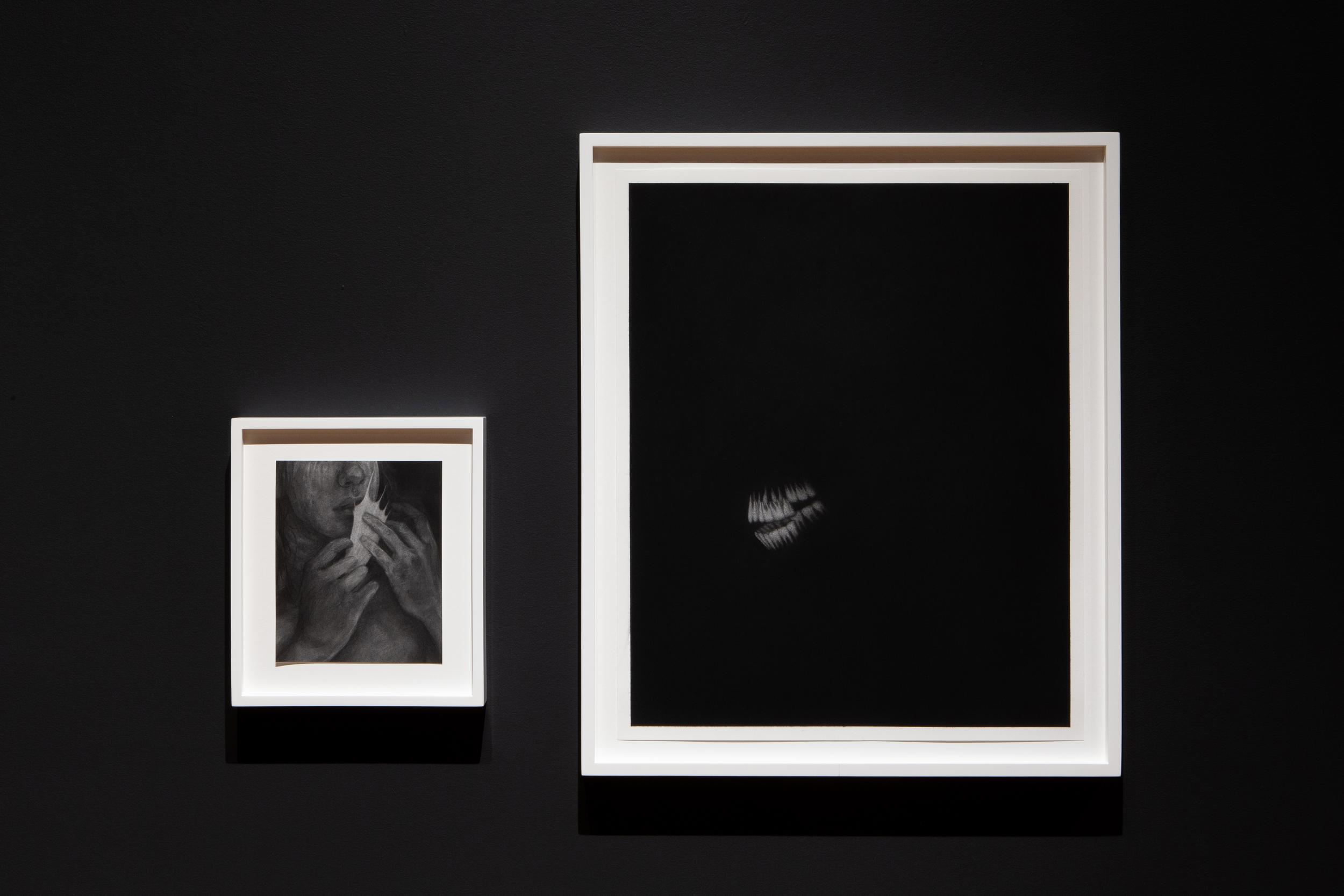
FM: Arel, your drawing Butterfly Graveyard (A Very Hard Truth) was also based on a personal encounter. Can you talk more about the role of autobiography and memory in the show?
AL: The origin point for our drawings in Not Dark Yet centered around the idea of the past as a source of “personal hauntings.” Memories can be fallible, and as we change, so do our relationships to our own histories. In this way, Alina and I believe the past is evolving and alive.
The encounter that inspired Butterfly Graveyard (A Very Hard Truth) occurred several years ago in a small nature preserve. I remember being immediately struck by the discovery of several butterfly wings floating in dark water. There was beauty in the way the plants perfectly framed the scene … It was as if the wings had been there forever, waiting for someone to look down, and it felt mournful yet necessary to observe them. There was a specialness to being in an environment where birth, life, decay, and death were occurring in such close proximity. I waited a long time for the right moment to make this drawing. It was the most challenging piece I made for the show and required a significant amount of erasing, adding, obliterating, and erasing again to create the shadowy atmosphere of the scene. I was very sick while I was making it, and I remember feeling determined to give the drawing and this experience the care they deserved.
AP: Personal memory served as an important starting point for us both, but we knew early on that we wanted to go beyond that. Memories can be elusive, scary, and unresolved. We all have memories that mold us, but where do we go from there? It was in this question that we both found an opportunity to see how the past can exist in the present, and it is within all of us to recognize and perhaps even manipulate that reality.
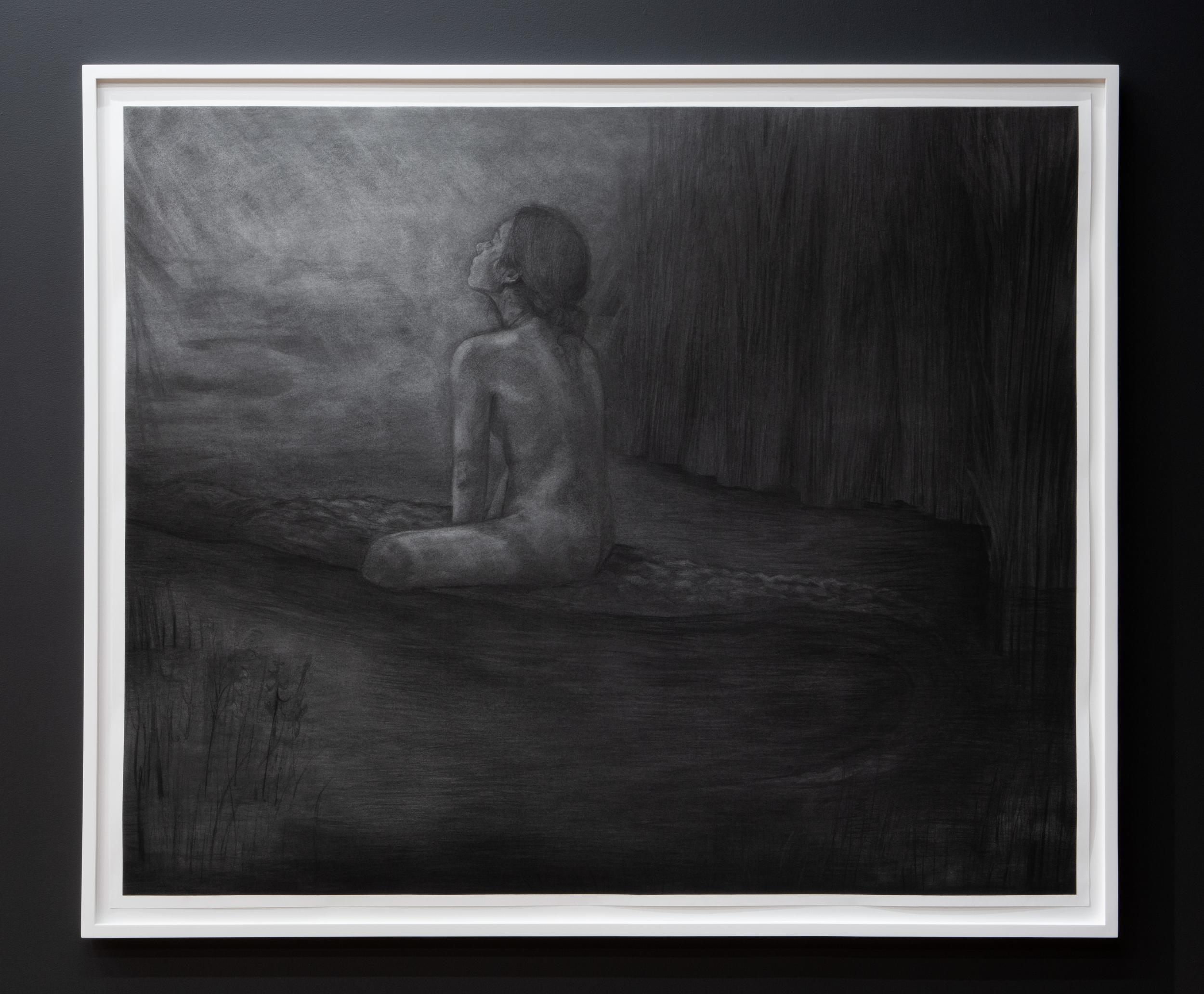
FM: Alina, your piece She Grew into Her Name depicts the back of a nude figure sitting nonchalantly on what appears to be a crocodile in a nondescript landscape. What were you attempting to portray in the making of this piece and what expectations did you have for the viewer?
AP: Our paths in life are rarely clear-cut or definitive. Where we are going can change at any moment, and it is through this vastness of the unknown that we end up in places we’d never imagine—whether that is hopeful or not. I wanted the piece to speak to that feeling of wandering, of existing at the threshold between hopefulness and hopelessness, which is something that we were both thinking about with this show.
The manner of drawing required to make this piece was hard for me. I remember struggling to steer away from stiffness. Maintaining the figure’s ambiguity and capturing the softness of the moment felt like a battle. Arel kept asking me, “What is the weather like around her? How does the air feel? How can you draw humidity?” It is questions like these that help shape the drawing.
FM: Can you relay a bit about your individual journeys as artists? When did you first decide you wanted to pursue art professionally and what were some of the landmark moments in your education and careers?
AL: I grew up in a haunted house. Without going into too much detail, I mean this both literally and figuratively. This had a profound impact on who I am and what I believe in, and I spent a lot of time thinking about what existed, concealed, in the darker corners of my home. Drawing was (and is) a way to make the unseen visible.
An important part of my background is in printmaking. In college, I very quickly gravitated toward intaglio and lithography, and after graduating, I studied collaborative lithography at the Tamarind Institute. My experience at Tamarind helped me realize I did not want to be a collaborative printer, and looking back, I had always been using printmaking as an extension of drawing anyway. It was Alina who encouraged me to let go of printmaking and focus on my drawings.
AP: I knew when I was very little that being an artist was the only option for me, and it still feels that way to this day. Drawing has always served as a way for me to create my own reality—one founded upon curiosity, autonomy, and a need to understand more of myself and the world around me. One of the most defining moments for my practice was when a professor asked me why I felt the need to turn my drawings into paintings. This question essentially gave me permission to completely abandon painting once and for all. From then on, I was consumed by paper, charcoal, and pastel!
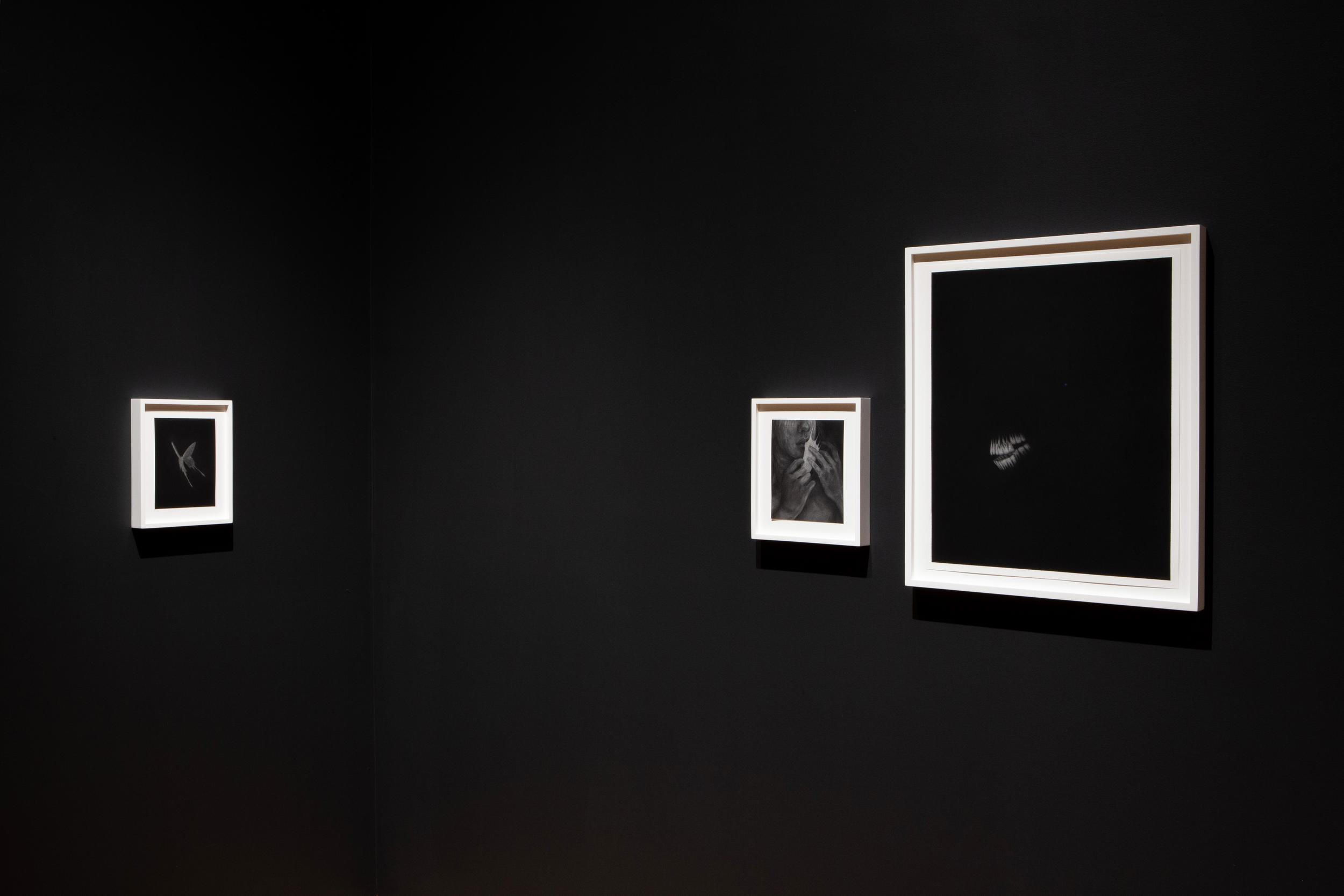
FM: What are you currently working on and most excited about in the studio?
AL: Recently, I have been interested in the idea of what it means to fracture the figure, to see how gestures made by isolated parts of the body can have more gravity and significance than depictions of an entire body. I am currently working on two drawings that I am particularly excited about. The first is a scene that will show interproximal reduction, an orthodontic dental procedure where tooth enamel is essentially “shaved down” to create space between two teeth. The second is of a glass elixir bottle which originally caught my eye in the collections of the Cushing/Whitney Medical Library, and which I was able to find out in the world and to draw from life.
AP: I am leaning into my interests of how we are all one and the same—how even our environments are intricately woven with our own being. There is no separation. Recently, my hands began searching for the lost biodiversity that Miami has witnessed rapidly in recent years. The growing loss of these ecosystems (due to the construction of luxury homes and strip malls), has echoed the recurring thoughts in my mind of my own “lost childhood” and experienced transgressions. Seemingly young yet ambiguously rendered “girls” keep appearing to me, and it is no doubt that their presence is being demanded. I am always pushing for them to have an undeniable presence and autonomy. Currently, my studio consists of these figures being wrapped by pythons, or even becoming the animal itself. Other invasive species from Miami have found refuge within my drawings as well. It is as if my studio has become a home to all the unwanted debris of my childhood and now, Miami itself.
Felicia J. Manning is a nineteen year old student, writer, and activist, born and raised in NYC. She is an alumni of Exalt Youth (2020), Topical Cream’s Art Writing Mentorship Program (2022 & 2023), and has interned at Someday Gallery (2023). Manning is an organizer for Youth Justice and Opportunities (YJ&O), New York, raising awareness for incarcerated youth and providing resources beyond jail. In 2023, she helped lead hundreds of people in Albany to lobby legislators and increase awareness of the pending YJ&O Act. She is currently still working with YJ&O to pass the bill.
Arel Lisette (b. Riverside, California) is a visual artist working with charcoal and pastel to create drawings on paper. Arel received her BFA in Fine Art from the Corcoran School of the Arts and Design at the George Washington University. She was awarded artist residencies to attend the Vermont Studio Center and the Alex Brown Foundation, and is a graduate of the Professional Printer Training Program at the Tamarind Institute of Lithography. Her work has been exhibited in the New Prints Program at the International Print Center of New York, and is included in the permanent collections of the City of Albuquerque and University of New Mexico.
Alina Perez (b. Miami, Florida) received her BFA in Painting from the Rhode Island School of Design and her MFA in Painting and Printmaking at the Yale University of Art in New Haven. She was a participant at the Skowhegan School of Painting and Sculpture in 2017, and has attended residencies at the Fine Arts Works Center in Provincetown, the OxBow School of Art in Michigan, and the Vermont Studio Center. Her work was recently exhibited at the Taubman Museum of Art, Virginia; Atlanta Contemporary, Georgia; Deli Gallery, New York; Arcadia Missa, London; Rachel Uffner, New York; and Company Gallery, New York.
